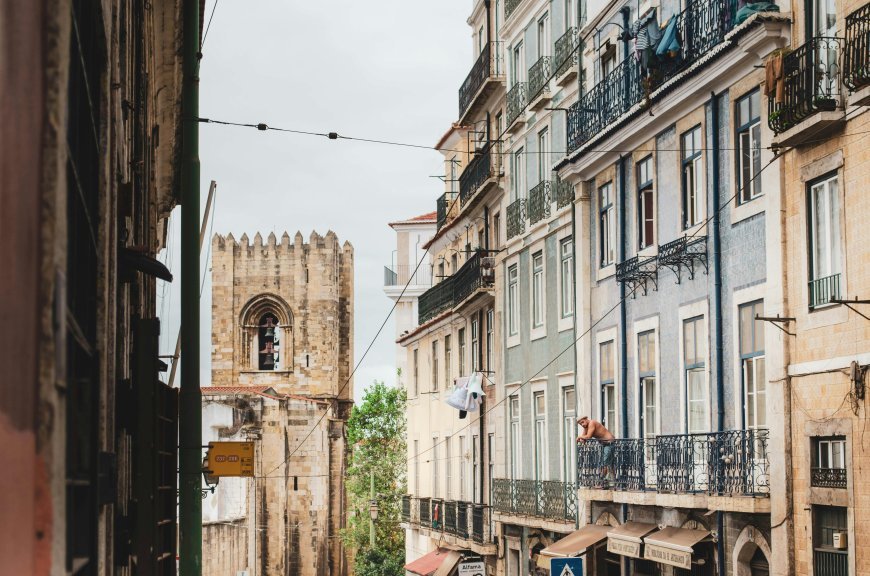What Are the Most Detrimental (and Frequently Inexpensive) Apartment Complexes in Europe?" A Q&A Guide
The following is a comprehensive Q&A-style article regarding the most problematic and economically disadvantaged apartment complexes throughout Europe as of 2025, properties infamously recognized for neglect, criminal activity, or substandard construction.
The following is a comprehensive Q&A-style article regarding the most problematic and economically disadvantaged apartment complexes throughout Europe as of 2025, properties infamously recognized for neglect, criminal activity, or substandard construction.
????️ "What Are the Most Detrimental (and Frequently Inexpensive) Apartment Complexes in Europe?" A Q&A Guide
Q1: What criteria determine a complex's classification as one of Europe’s 'worst'?
A: A complex is typically deemed 'worst' based on several factors, including:
Severe structural defects, such as deteriorating concrete, leaking roofs, and mold infestation.
Elevated crime rates, instances of vandalism, and antisocial behavior.
Deteriorating social conditions, including high unemployment, segregation, and insufficient upkeep.
Often characterized by slum-like environments or abandoned estates.
The issues extend beyond mere aesthetics; these complexes can significantly compromise the health and well-being of their residents.
Q2: What are some infamous examples found in Europe?
Several notable estates across the continent warrant examination:
1. Hulme Crescents (Manchester, UK)
Once regarded as Europe’s largest post-war public housing initiative, accommodating over 13,000 residents in 3,284 units.
Known for design flaws, asbestos presence, crime, and antisocial behavior.
Demolished in the 1990s after being labeled “Europe’s worst housing stock” (source: Reddit, The New Yorker, Wikipedia).
2. Aylesbury Estate (London, UK)
Constructed between 1963 and 1977; still undergoing regeneration as of 2025.
Recognized for inadequate construction and neglect, it was symbolically highlighted by Tony Blair as a priority for the impoverished.
Considered a significant indicator of urban decay in the UK (source: Wikipedia).
3. Balfron Tower (London, UK)
A brutalist high-rise was previously criticized for contributing to social isolation and the phenomenon known as 'sleeping tower syndrome'.
Although it has been redeveloped, its history is marred by crime and neglect.
4. Red Road Flats (Glasgow, Scotland)
Comprising 25-storey slab towers constructed in the 1960s, which became notorious for criminal activity.
Associated with incidents of fires, asbestos exposure, and suicides; gradually demolished after being declared uninhabitable (source: The Guardian, Irish Independent).
5. Clune Park Estate (Port Glasgow, Scotland)
Early 20th-century tenements that are largely abandoned and deteriorating.
Infamously referred to as “Scotland’s Chernobyl,” with demolition slated for 2025 (source: Wikipedia).
6. Chanov Estate (Most, Czech Republic)
Established in the 1970s to relocate Roma communities, it eventually devolved into a ghetto.
Referred to as a 'housing estate of horror' due to high unemployment rates, poor maintenance, and segregation (source: Wikipedia).
7. Luník IX (Košice, Slovakia)
Designed for the Roma community in 1979, currently characterized by severe overcrowding and poverty.
Experiences frequent utility cutoffs, prevalent disease, and nearly 100% unemployment (source: Wikipedia).
8. Estates in Portugal (e.g., Dolphin House, with Dublin as comparison)
While Portuguese buildings may not consistently be the worst, they are often plagued by dampness, leaks, and noise issues.
Approximately 22% of middle-class households report serious housing complaints, exceeding the EU average (source: The Portugal News).
Q3: What conditions do residents endure?
A: Residents of these estates frequently confront:
Mold, dampness, and poor insulation lead to health concerns (source: The Sun).
Structural hazards: presence of asbestos and flammable cladding (e.g., issues frequently noted in Red Road and Grenfell parallels) (source: The New Yorker).
High crime rates and social isolation, particularly in imposing brutalist structures.
Social stigma, with ghettos such as Chanov and Luník IX marked by segregation and neglect (source: Wikipedia).
Q4: What factors contribute to the existence of these complexes?
A: The underlying causes include:
Cost-effective, mass-produced post-war construction: many were constructed rapidly using substandard materials.
Planning inadequacies: for example, the deck-access design in Hulme and slab towers in Red Road.
Economic decline and depopulation: the collapse of shipbuilding in Port Glasgow, and the segregation of the Roma population in Czechia.
Underinvestment: aging estates in Portugal and Ireland are lacking upgrades (source: The Guardian, Wikipedia, SpringerLink).
Q5: Are there initiatives aimed at improving or demolishing these estates?
A: Yes, but outcomes vary:
Hulme and Clune Park are undergoing demolition and replacement.
Aylesbury and Balfron are in the regeneration phase, often involving gentrification that displaces original residents (source: Wikipedia, The Guardian).
In Portugal, Ireland, and the Czech Republic, NGOs and EU directives are advocating for renovations and improved maintenance.
Q6: Why are these complexes perceived as inexpensive, yet fraught with issues?
A: The perception of low cost is misleading; these properties often:
Depreciate rapidly due to neglect.
They are situated in low-demand or declining areas.
Carrying a social stigma diminishes their attractiveness.
Regularly require expensive repairs, counterbalancing the perceived affordability of rent or purchase price.
Thus, while they may appear affordable initially, the long-term health, safety, and social implications can be significant.
Q7: Is it ever advisable for individuals to reside in these estates?
A: The situation is complex:
Short-term benefits: affordability for students or struggling families.
Harsh realities: potential health risks (mold, asbestos), crime rates, and social exclusion.
Better alternatives: where possible, seek renovated units or other affordable housing options.
Residing in such estates often necessitates significant compromises; affordability may come at the cost of safety, comfort, and long-term well-being.
The most problematic apartment estates in Europe be they brutalist high-rises or deteriorating tenements, are products of historical urgency, inadequate planning, and systemic neglect. While they may offer affordability, they frequently pose significant dangers both physically and socially. For those contemplating residence in such locations, thorough research, health inspections, and awareness of potential displacement during redevelopment are paramount.
What's Your Reaction?








